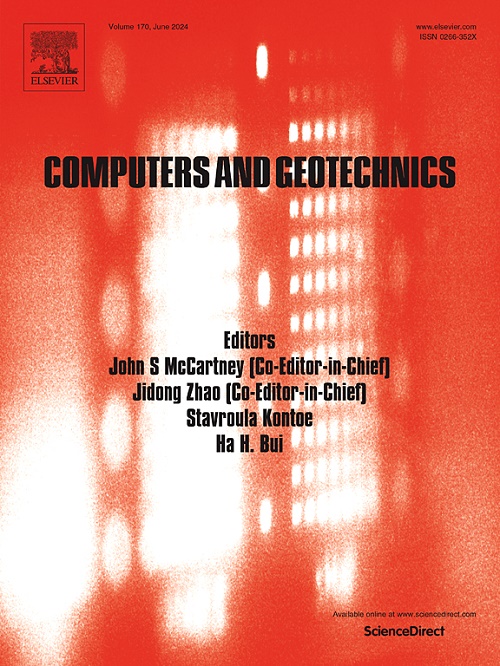Reactive transport modeling of clogging in landfill leachate collection system
IF 5.3
1区 工程技术
Q1 COMPUTER SCIENCE, INTERDISCIPLINARY APPLICATIONS
引用次数: 0
Abstract
The leachate collection system (LCS) is an important component of the barrier system of landfills. LCS in China is subjected to serious clogging due to the more degradable organics and water in the municipal solid wastes (MSWs). To evaluate the service life of LCS, a reactive transport model is developed to simulate the biogeochemical clogging in LCS. The hydrolysis reactions of degradable components and the kinetic calcium leaching process are taken into account to calculate the generation of VFAs and Ca2+ in MSW. The ionization equilibrium of volatile fatty acids (VFAs), dissolution equilibrium of calcium carbonate, and the kinetic biodegradation reactions of VFAs are considered to simulate the pH variation, calcium carbonate precipitation, and biofilm growth during clogging. By comparing with the laboratory experiment data, the proposed numerical model shows the ability to accurately predict the decrease of the porosity in LCS. Parameter analysis indicates that the decrease of the mass fraction of degradable components in MSW, leachate irrigation rate, and calcium ion leaching rate can significantly extend the service life of LCS. The proposed reactive transport model can be the methodological support for the design and service life prediction of leachate collection systems in landfills.
求助全文
约1分钟内获得全文
求助全文
来源期刊

Computers and Geotechnics
地学-地球科学综合
CiteScore
9.10
自引率
15.10%
发文量
438
审稿时长
45 days
期刊介绍:
The use of computers is firmly established in geotechnical engineering and continues to grow rapidly in both engineering practice and academe. The development of advanced numerical techniques and constitutive modeling, in conjunction with rapid developments in computer hardware, enables problems to be tackled that were unthinkable even a few years ago. Computers and Geotechnics provides an up-to-date reference for engineers and researchers engaged in computer aided analysis and research in geotechnical engineering. The journal is intended for an expeditious dissemination of advanced computer applications across a broad range of geotechnical topics. Contributions on advances in numerical algorithms, computer implementation of new constitutive models and probabilistic methods are especially encouraged.
 求助内容:
求助内容: 应助结果提醒方式:
应助结果提醒方式:


